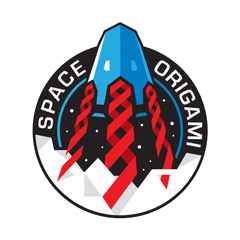Preparation time: Subscribe to our newsletter and you will automatically receive all news (link). Follow us on Facebook and Instagram. We will also share current information on the blog of our website.
ISS Time: We will regularly (once a week) illuminate our samples with LEDs and capture this photographically. Since we will stain the DNA Origami, you can easily see where the DNA Origami structures are concentrated on photos without magnification. This indicates crystal growth. We share the photos on our website (www.space-origami.com).
Evaluation: We are already very excited about the evaluation of the crystallization approaches. If you are, too: The aim of the project is to present the results in scientific publications and to publish a summary of our experiments on the project website.
We want to exploit the positive effects of microgravity on crystal growth. Sedimentation and convection effects on the International Space Station are negligibly small, two effects that make uniform crystal growth on Earth difficult.
Under microgravity conditions DNA origami structures can crystallize undisturbed by sedimentation of the particles or convection currents. We therefore hope for a very regular, pure, macroscopic 3D DNA-Origami crystal.
DNA Origami is the folding of DNA to create any two- or three-dimensional shape in the nanometer range. A long single strand of DNA, called the scaffold strand, is folded into the desired shape with the help of many shorter synthetic DNA single strands, called staple strands. This very precise binding is achieved by the complementary base pairing of the DNA. DNA Origami is therefore a self-assembling method with which it is possible to form arbitrary structures with nanometer precision.
Research time in space is very limited and thus very expensive. The box is therefore simply placed in a rack on the ISS and taken out again for the flight to Earth. We can start the experiment from Earth; it is fully automated.
The cameras and LEDs also run automatically and provide us with regular updates about our experiment.
Space TangoLab enables the accommodation of research and construction systems on the ISS in compact containers, so-called CubeLabs. Several CubeLabs can be operated in parallel and autonomously in the Space TangoLab and also provide data and monitoring options almost in real time. https://spacetango.com/tangolab/

